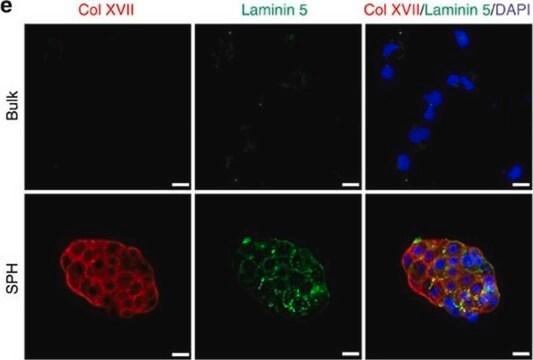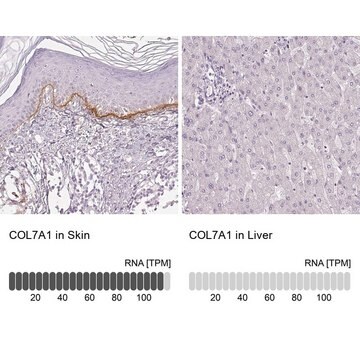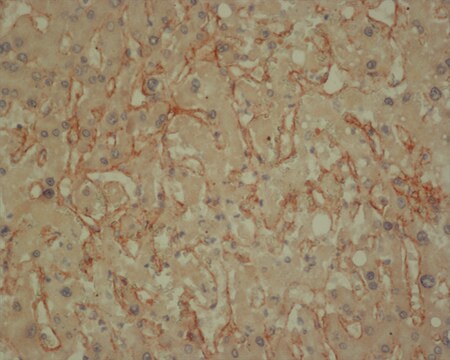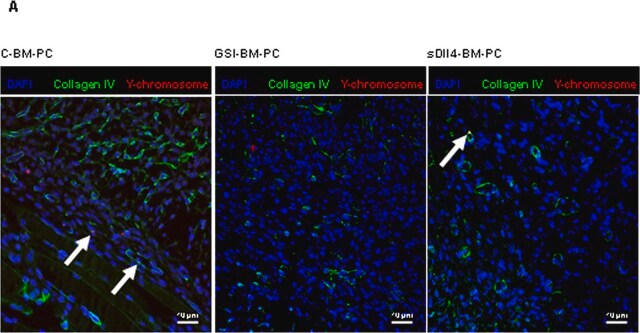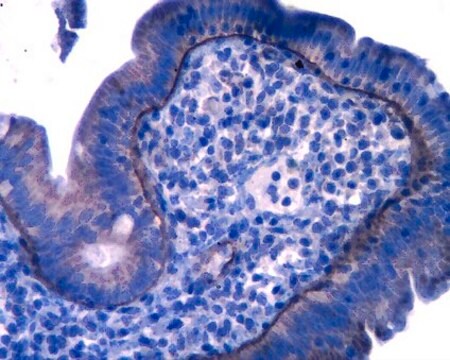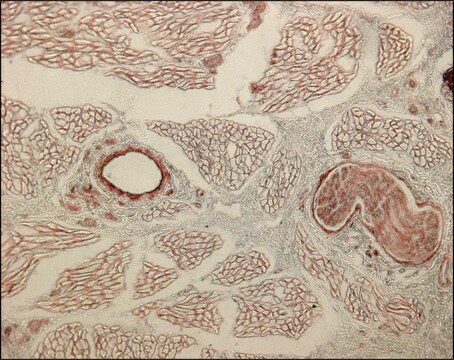MAB1949
Anti-Laminin-5 Antibody, clone P3E4
clone P3E4, Chemicon®, from mouse
Synonim(y):
Epiligrin
About This Item
Polecane produkty
pochodzenie biologiczne
mouse
Poziom jakości
forma przeciwciała
purified antibody
rodzaj przeciwciała
primary antibodies
klon
P3E4, monoclonal
reaktywność gatunkowa
human
producent / nazwa handlowa
Chemicon®
metody
ELISA: suitable
immunocytochemistry: suitable
immunohistochemistry: suitable
immunoprecipitation (IP): suitable
western blot: suitable
izotyp
IgG1
przydatność
not suitable for activity/function inhibition
numer dostępu NCBI
numer dostępu UniProt
Warunki transportu
wet ice
docelowa modyfikacja potranslacyjna
unmodified
informacje o genach
human ... LAMC2(3918)
Opis ogólny
The laminin-5 isoform (nicein, epiligrin, and kalinin) is abundant in transitional epithelium, stratified squamous epithelia, lung mucosa, and other epithelial glands (Kallunki et al., 1992; Stahl et al., 1997). Laminin-5 is a heterotrimer consisting of alpha3, beta3, and gamma2 subunits that associate via large helical regions to produce a cruciform-shaped molecule (Rousselle et al., 1991 J. Cell Biol. 114: 567-576; Baker et al., 1996 J. Cell Sci. 109: 2509-2520). Laminin-5 is synthesized initially as a 460-kD molecule that undergoes specific processing to a smaller form after being secreted into the extracellular matrix (Marinkovich et al., 1992 J. Biol. Chem. 267: 17900-17906; Vailly et al., 1994 Eur. J. Biochem. 219: 209-218; Matsui et al., 1995 J. Biol. Chem. 270: 23496-23503). The size reduction is a result of processing the 3 and 2 subunits from 190-200 to 160 kD and from 155 to 105 kD, respectively (Marinkovich et al., 1992; Vailly et al., 1994; Matsui et al., 1995). {Goldfinger, LE (1998) J Cell Biol 141(1):255-265}.
Specyficzność
Immunogen
Zastosowanie
Immunocytochemistry
Immunoblotting: (non-reducing)
Immunoprecipitation
ELISA
Optimal working dilutions must be determined by end user.
Cell Structure
ECM Proteins
Postać fizyczna
Przechowywanie i stabilność
Inne uwagi
Informacje prawne
Oświadczenie o zrzeczeniu się odpowiedzialności
Nie możesz znaleźć właściwego produktu?
Wypróbuj nasz Narzędzie selektora produktów.
Kod klasy składowania
12 - Non Combustible Liquids
Klasa zagrożenia wodnego (WGK)
WGK 1
Temperatura zapłonu (°F)
Not applicable
Temperatura zapłonu (°C)
Not applicable
Certyfikaty analizy (CoA)
Poszukaj Certyfikaty analizy (CoA), wpisując numer partii/serii produktów. Numery serii i partii można znaleźć na etykiecie produktu po słowach „seria” lub „partia”.
Masz już ten produkt?
Dokumenty związane z niedawno zakupionymi produktami zostały zamieszczone w Bibliotece dokumentów.
Nasz zespół naukowców ma doświadczenie we wszystkich obszarach badań, w tym w naukach przyrodniczych, materiałoznawstwie, syntezie chemicznej, chromatografii, analityce i wielu innych dziedzinach.
Skontaktuj się z zespołem ds. pomocy technicznej